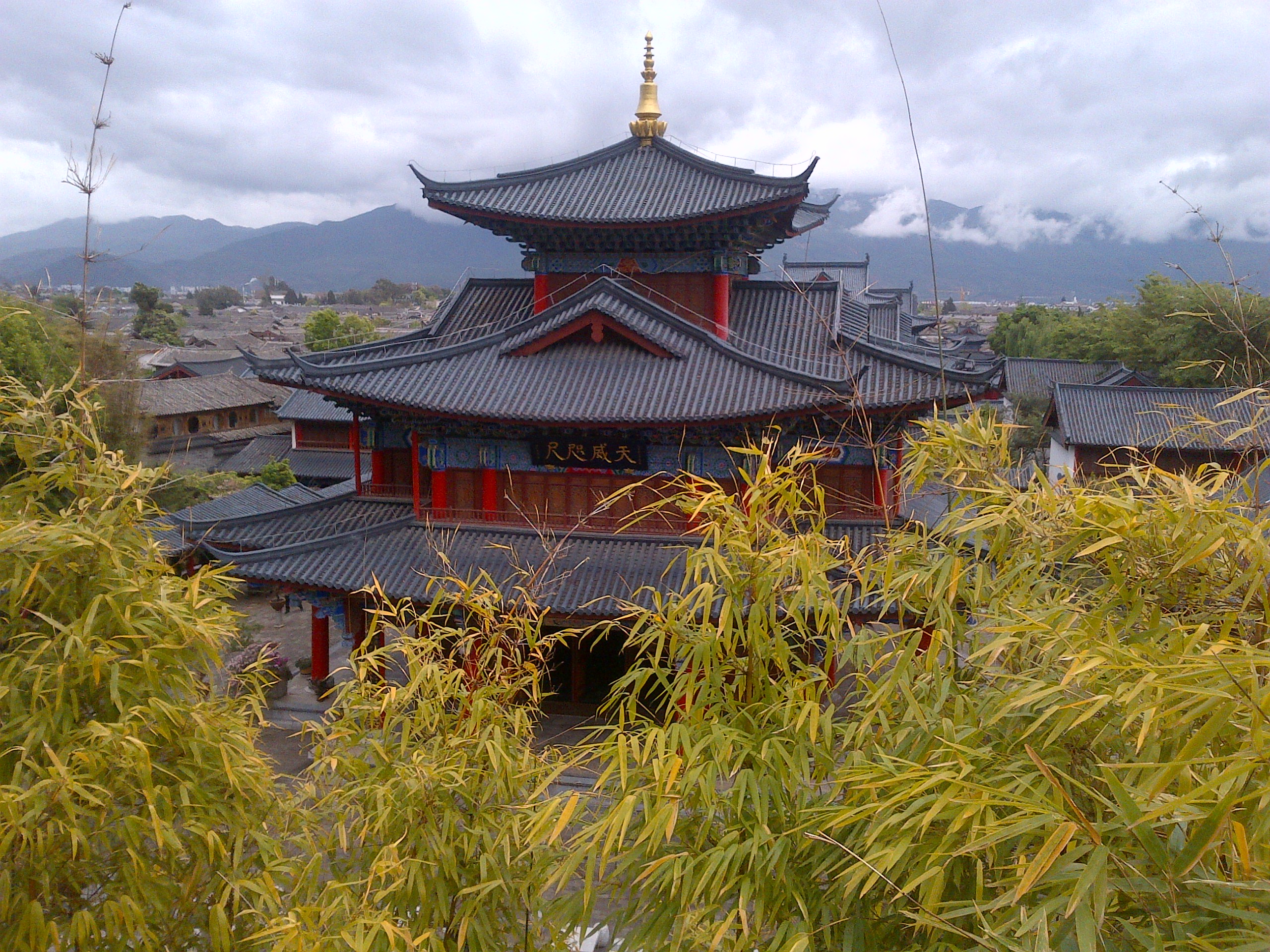I visited Yunnan Province in southern China several times during the first years of this century, when I was helping the local authorities and the UNESCO National Committee of China with the nomination of the Stone Forest near Shilin as a natural World Heritage Area.
Last weekend, I returned to Yunnan, but with a very different agenda, as I am now in charge of the International Network for Bamboo and Rattan (INBAR). I had been told that Yunnan is very rich in bamboo species, and I wanted to see this with my own eyes.
First my wife and I spend the weekend in the charming old town of Lijian, a cultural World Heritage Area. It is a beautiful town, and well worth the visit. One of the highlights of our stay was a visit to the Mu mansion, and I did see bamboo in the garden of the palace.
But, the main objective of this trip was a visit to Xishuangbanna Tropical Botanical Garden-which is referred to as XTBG on signposts and posters. Professor Yang Yuming, President of the Yunnan Academy of Forestry, is about to publish a flora of bamboo species in Yunnan Province and the latest count is that the province houses 276 species of bamboo, which is more than half of the total of China’s bamboo diversity.
All of the bamboos in Yunnan are tropical bamboo species, and that means that they represent sympodial, clumping bamboos, where the culms grow from a central root mass. There is no wide spread of roots and rhizomes, which is the case with the temperate monopodial bamboo species, which we call running bamboos. There are more than 100 different bamboo species represented in XTBG, including the striking Bambusa vulgaris.
A large number belong to the genera Dendrocalamus. Dendrocalamus yunnansis is only found in Yunnan, as the name suggests, and Dencrocalamus hamiltonii is only found in Xishuangbanna. Dendrocalamuus sinicus is one of the largest bamboos in the world, and can reach heights of more than 30metres. and Dendrocalamus giganteus is also a large species.
Dendrocalamus giganteus – XTBG
After our visit to the botanical garden we went to a forest research station of the Yunnan Academy of Forestry, which is focusing on finding opportunities for economic development of the forest, without the need to cut down the trees. The researchers are also testing alternatives to rubber trees. Large areas of Yunnan were transformed into rubber plantations in the sixties and seventies, but this is not good for biodiversity and ecosystem health. It is also no longer economically attractive, as the price of rubber has slumped and import of cheap rubber competes with local production. NTFP development, including bamboo planting and harvesting, is one of the many options that is being considered. The nurseries at the research station are very healthy, though currently stocked with hardwood seedlings, and not with bamboo plants.
Our last visit was again focused on bamboo, and took us to a “bamboo introduction area” near Pu’er. The plan is for a 2000 hectares valley to be re-forested with different bamboo species. Currently, the upper slopes are covered in Eucalyptus and rubber trees, and the valley floor and lower slopes are non-productive agricultural land. A healthy bamboo forest would be a real asset, with significant ecotourism potential.
Mr Zhang Xingbo, who is the driving force behind the initiative, explained that the garden will become a living museum, with information about the botanical aspects of bamboos, as well as details about their ecology and examples of the many uses. Eventually, the bamboo garden will also house restaurants where bamboo shoots can be eaten and bamboo beer can be drunk, and guesthouses built from bamboo with bamboo furniture and bamboo fittings. There may be outlets for bamboo handicrafts and nurseries that sell bamboo plants for the garden. It is a long-term development plan that would be daunting in many parts of the world, but the Yunnan colleagues are convinced they will get the work done in the next few years.
The first plants were planted last year, and it is real “work-in-progress”, but the new plants look healthy, and the current selection already represents a variety of species. There are some very interesting individual plants, such as a few species of Chimonocalamus, which is a genera tropical bamboos from Myanmar and Yunnan that are particularly rich in aromatic oil. The main stem and leaves could be exploited commercially for perfume industry or other purposes, but this is not yet happening. Folklore claims that the Japanese store tea in its culms, as it adds flavour to the leaves.
Mr Zhang’s nurseries include other exciting bamboo plants, including the smallest bamboo plants that look like grass, and could be used for ground cover. He also has saplings of red bamboo, and a healthy clump of recently discovered black bamboo from Vietnam. Professor Yang explained that the black bamboo is so unusual, that it does not yet have a scientific name.
The following day was spent in Kunming where we visited the Provincial Forest Bureau, and signed an agreement to establish a training centre for tropical bamboo, in the Yunnan Academy of Forestry.
ll-in-all, this was a very interesting learning experience. There is still a lot more to see in Yunnan, and I hope to return next year, not in the least to see the progress with the afforestation of the Pu’er bamboo garden.











0 comments
Write a comment